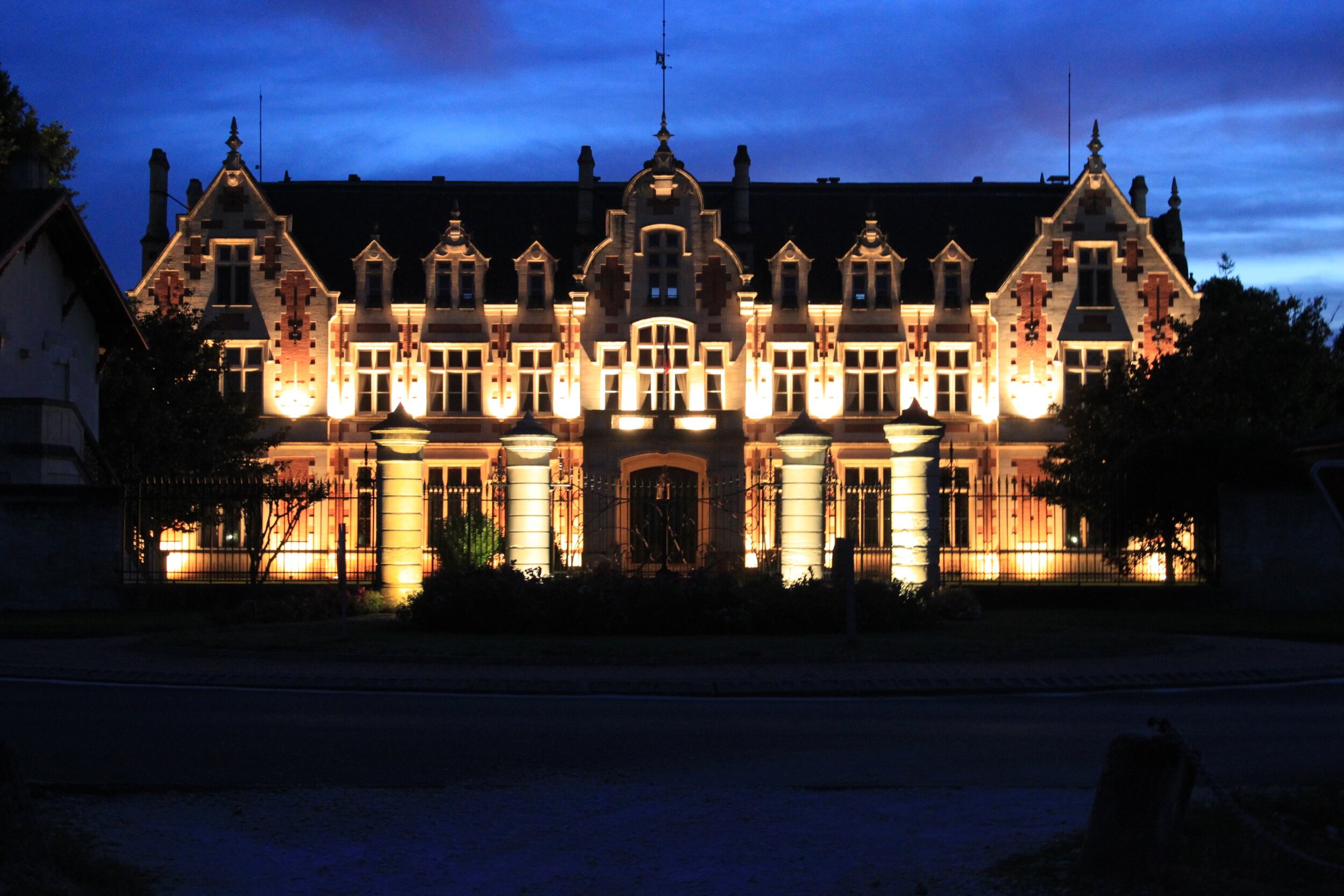New Bordeaux wine facilities
Of course, Bordeaux is most famous for its wine, but it is also home to some incredible architecture. In recent years, the very traditional châteaux of Bordeaux have made some modern additions - some striking in their design, others in their sheer size. Here are a few of the latest new winemaking facilities in Bordeaux.
Château Figeac, Saint-Émilion
Since 1972 the Manoncourt family has continually invested in the estate through significant enhancements although this current project is arguably the most extensive, involving the construction of new cellars, vat rooms, reception areas and tasting rooms. The latest improvements maintain a strong focus on the fine balance between traditional wine-making and innovation while adhering to the principles of High Environmental Quality.
The new facilities have been specifically designed to meet the evolving needs of the estate as new vineyard plots come into production. Built into a hillside, the new facilities allow for an entirely gravity-driven vinification process and increase the available space more than threefold, from 1,600 square meters previously to 5,000 square meters. Eight custom-made FSC-certified French oak vats placed in a circle form the beating heart of the semi underground vat house, complemented by 40 truncated cone, stainless steel vats designed for plot and intra plot vinifications. In keeping with the scientific mindset that guides the team at Figeac , a specific vat room is dedicated to research and development.
With a natural atmosphere of 75% humidity and an average temperature of 16°C, the new underground cellars will benefit from ideal ageing conditions. The combination of these naturally ideal conditions and this process of control will enable the wine to age as peacefully as possible without any pressure, temperature or humidity constraints.
Château Figeac began welcoming guests to the new facilities this year with the trademark Figeac hospitality. We highly encourage a visit of this wonderful estate during your next trip to Bordeaux.
The new winery built into the natural relief at Château Figeac. (Credit: Château Figeac)
Inside Château Haut-Bailly’s new wine cellar. (Credit: Château Haut-Bailly)
In 2018, Château Haut-Bailly announced an ambitious new project to enhance the estate's wine-making facilities. The project was just completed at the beginning of the year and the result is arguably one of the most beautiful and technologically advanced wine facilities in all of Bordeaux.
The design, a partnership between architect Daniel Romeo and landscape designer Hervé Rosset, is seamlessly integrated into relief of surrounding area and this effect is enhanced by a natural green roof which is already rich in foliage and brimming with wildlife. According to Romeo, "By working with the contours of the land, we were able to integrate the project into its natural terrain without modifying the garden or the landscape."
Gabrile Vialard, Technical Director of Château Haut-Bailly says, “This ambition for excellence that we all have at Haut-Bailly is achieved through a tool that reflects the wine we make: precision, purity and elegance. To be able to achieve this, we need a tool that is as elegant and refined and in which people feel comfortable working.”
This stunning new building houses the estate's production, ageing and storage facilities. At the heart of the building, visitors will find 54 concrete vats perfectly arranged in 3 almost hypnotizing concentric circles.
Véronique Sanders, President of Château Haut-Bailly says, “I believe that Haut-Bailly has been making marvelous wines for several decades, several centuries but it is very important to always question ourselves and go to the next stage. The next step for us was to equip ourselves with a tool that would be on the scale of the work we do today in the vineyards.” She continues, “We wanted to create the winery of tomorrow but we also wanted to keep the aesthetics and preserve the spirit of the place.”
You can enjoy a preview of the new cellars here.
We recommend enjoying a private tour and tasting of the new facilities followed by a private dining experience at La Table Privée de Haut-Bailly. Set within the 19th century chateau, menus are conceived using regional produce sourced from local markets and paired with the wines of Château Haut-Bailly. The intimacy of the setting (for groups of 4 to 15 persons), the friendly attentiveness of the staff and the creative cuisine of chef Jean-Charles Poinsot make for an exquisite Bordeaux experience.
Aerial view of Château Haut-Bailly and the new wine facilities. (Credit: Château Haut-Bailly)
Le Dôme, Saint-Émilion
Le Dôme can proudly claim to be only the second winery in Bordeaux, after Château Margaux, to have facilities designed by Sir Norman Foster's group, Foster + Partners.
The new building offers 360-degree views of the vineyards belonging to Le Dôme's prestigious neighbors including Château Angélus, Château Canon and Château Beauséjour Bécot. A panoramic tasting area sits above the barrel cellar and vinification facilities and each floor is linked by interior and exterior ramps, with a circular atrium that rises through the center of the building.
Sir Norman Foster said of the design, ‘The process of winemaking is taken to the heart of the building and the upper level provides a flexible area for people to gather and taste the wonderful wine of the terroir.’
Details of the hospitality offering at Le Dôme will be forthcoming.
Le Dome, Saint-Émilion (Credit: Fosters + Partners)
Carillon d'Angélus and N°3 d'Angélus , Saint-Magne-de-Castillon
These new facilities are already up and running and are dedicated to the production of the second and third wines of Château Angélus - Carillon d'Angélus and N°3 d'Angélus.
The new facilities are located in Saint-Magne-de-Castillon and will allow the Angélus team to not only improve the quality of the second and third wines but also the quantity produced in order to meet increasing demand.
These new facilities are resolutely modern and benefit from the cutting-edge winemaking technology and equipment. The building, partially buried below ground with a green roof heavy with vegetation and photovoltaic panels, also has a system which monitors the production of CO2 and consumption of water and energy.
The vinification cellar is 100% gravity-fed. It is equipped with 18 inverted truncated cone-shaped vats with a hoist system for the vatting and pumping over. A dedicated nitrogen production plant allows the team to control oxygen both during vinification and maturing.
Visits of these new facilities will not be open to the general public.
The new Carillon d'Angélus and N°3 d'Angélus winery just outside Saint-Émilion ( Credit: Deepix Studios)
The new winery at Château Lynch-Bages in Pauillac (Credit: Château Lynch-Bages)
First, announced in 2016, work on the new facilities at Château Lynch-Bages started the following year. The project has been a collaboration between New York architect Chien Chung (Didi) Pei, who Jean-Michel Cazes met over 30 years ago at the Louvre Pyramid construction site, and BPM Architectes which has been involved in a number of high profile winery constructions around Bordeaux in recent years.
The technical improvements of these new facilities centers on three areas: a vast area dedicated to receiving the harvest; the fermentation cellar, allowing a more precise vinification of individual parcels in 80 stainless steel vats; and finally a large cellar, capable of accommodating two vintages at once, hence increasing the duration of wine maturation. The new facilities provide double the number of tanks and a barrel cellar twice the size.
The project brings its fair share of innovation, while respecting Lynch-Bages’ history. Gravity flow winemaking will be a key process in the new facilities, as a nod to the estate’s historic fermentation cellar designed by Skawinski in the 19th century, which also has its deserved place amidst the new buildings.
Private visits of Chateau Lynch-Bages and the new facilities might be possible at a later date.
Château Troplong Mondot, Saint-Émilion
At 110 meters, Château Troplong Mondot, occupies the highest point in the Saint Emilion appellation. Today, this historic estate not only offers incredible views but also some stunning new wine making facilities.
Since the acquisition of Troplong Mondot in 2017 by the French insurance group SCOR, the estate has seen significant investments including the acquisition of land from neighbors Château Bellisle Mondotte and Clos La Barde, and the bringing onboard of Aymeric de Gironde from Cos d'Estournel to manage the estate, with new winemaking consultants. There have also been some significant renovations to the accommodations and a remodeling of the estate's fine dining restaurant, Les Belles Perdrix.
In addition to all this, there has been an extensive overhaul of the estate’s winemaking facilities which have since doubled in size. One of the most impressive features of the new facilities is the sleek new barrel cellar, dubbed the ‘cathedral cellar’ thanks to its spectacular 12 meter high ceilings, and it looks truly spectacular.
We highly recommend including a private tour of Château Troplong Mondot during your visit to Bordeaux, during which you’ll roam through the vineyards aboard a vintage Land Rover and see the estate’s dozen or so horses at work, followed by a vertical tasting accompanied by appetizers prepared by Chef David Charrier.
The ‘cathedral cellar’ at Château Troplong Mondot (Credit: Cécile Perrinet Lhermitte)
Château Cantenac Brown, Margaux
After changing hands several times in recent years, Château Cantenac Brown in Margaux is now owned and managed by Tristan Le Lous, an agronomist with a passion for oenology. Soon after the acquisition, Tristan Le Lous announced the construction of an ambitious new project with sustainability at the fore and featuring an incredible raw earth cellar.
The project is being designed by Philippe Madec, a pioneer in eco-construction. This new 5000 m² cellar, combines modernity and sustainability and will be a remarkable technical feat. The project will retain the old historical buildings while creating the new facilities without distorting the site, using only natural, untreated materials: raw earth and solid wood from the Aquitaine region and no use of concrete. The walls of the cellar will be built using a 1,000 ear-old technique of rammed earth construction which involves compressing the raw earth, composed of clay and sand, onsite at the property to form the walls of this unique building. The cellar’s low vault will be constructed of compressed earth blocks made from clay, and will be one-of-a-kind in Europe given its size and the only such structure worldwide to have a wooden framework.
The cellar’s thermal inertia provided by the raw earth will avoid the need for air conditioning and will offer the perfect atmosphere, in terms of temperature and humidity levels, for the stability and ageing of the wines in barrels without requiring energy consumption. The vat room will be composed of a large number of smaller vats to allow for the separate vinification of each parcel and high-precision blending.
The project is set to be complete for Bordeaux’s 2023 harvest. Once complete, visitors will be able to enjoy these fascinating new facilities as part of their private tour and tastings at Cantenac Brown.








